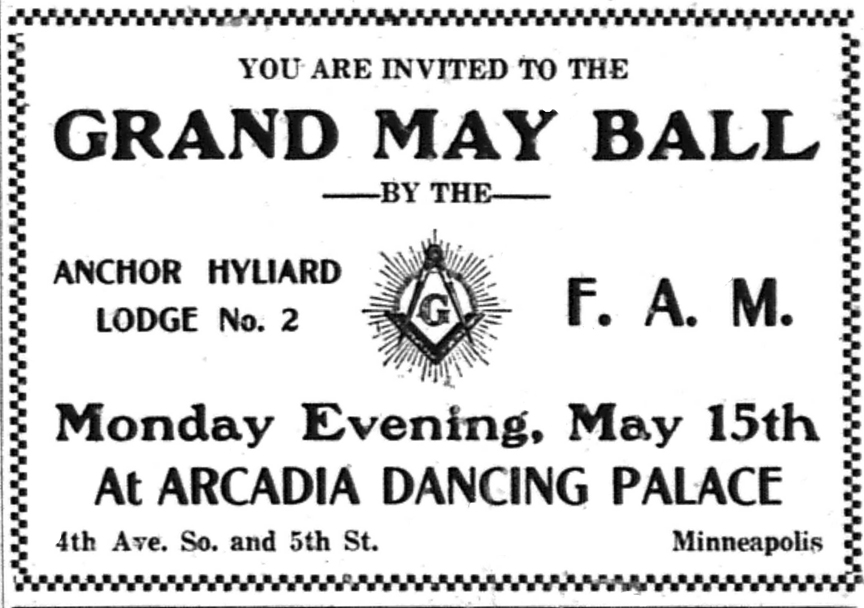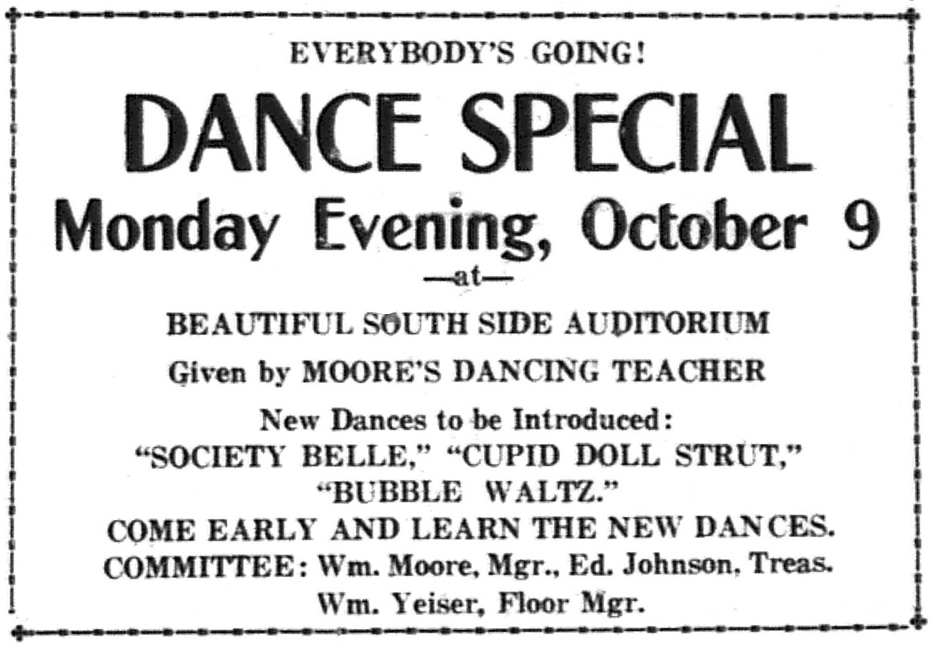Dances: 1922
March 1, 1922
A look into what the black community was listening and dancing to in the 1920s comes from the Northwestern Bulletin, a weekly out of St. Paul. There was also the Western Appeal, which began in 1885 and became just the Appeal in 1889. It must have been a Minneapolis-based paper, as the Appeal and the Northwestern Bulletin ran concurrently from February 1922 until they merged to become the Northwestern Bulletin-Appeal in January 1924 until August 1925. I started looking at the Northwestern Bulletin when it started in March 1922.
And it looks like the tiny black community was having some fun in the Roaring ’20s! Despite Prohibition, and the fact that they were unwelcome at downtown hot spots, they held their own dances, balls, picnics, and other gatherings.
The sponsors of these events were generally clubs or Fraternal organizations like the Elks, Masons, and the Knights of Pythias.

By the way, just to make it interesting, there were two Arcadia Dancing Palaces:
- 8th and Cedar in St. Paul – this was referred to as Dreamland Hall in March 1922, but that name would come back again and again as well.
- 315 Fifth Street So. in Minneapolis.
And there were two Coliseums, too:
- Lexington and University, St. Paul
- 2708 West Lake Street, Minneapolis. This building still stands!
Other popular venues were:
- Union Hall, St. Paul
- Elk’s Hall, Minneapolis
- South Side Ballroom, Minneapolis
And then there were the dances! One enticement to come to a ball or a dance was to learn a new dance.

The Hennepin County Enterprise shows that things were hoppin’ west of Minneapolis:
- There was a Town Hall Dance in Minnetonka Mills on October 8, 1922 – admission 25 cents. “New and Old Dances”
- In October there was a Masquerade Ball at the Oak Knoll Barn on Superior Blvd. (which became Wayzata Blvd.), five miles west of (Minneapolis?) city limits. Music by Ernie and His Oriole Syncopators.
- A New Year’s Eve Dance was held at Olson Hall (Hopkins?), with music by the Hopkins Junior Band.


